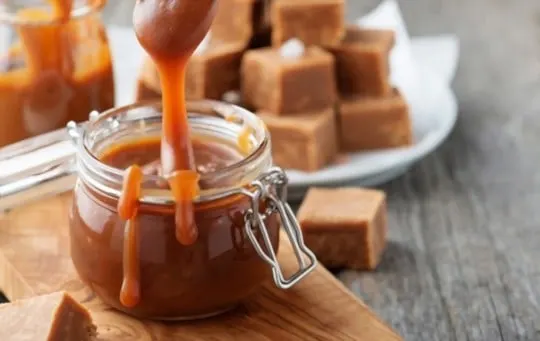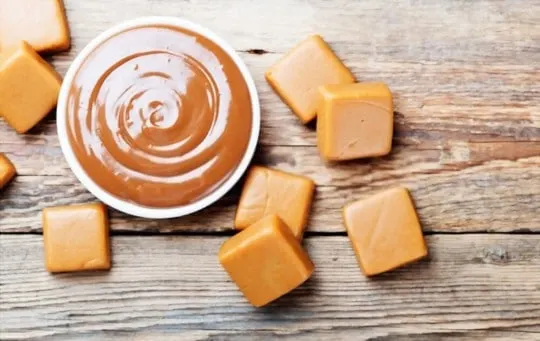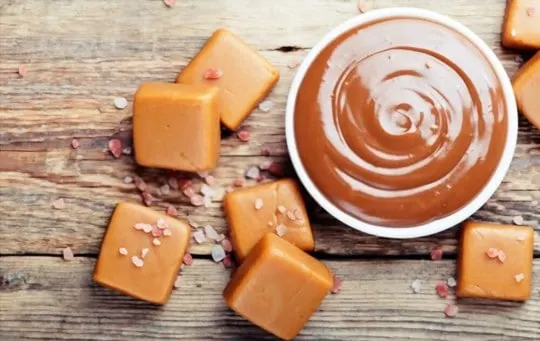From candy treats to desserts, this versatile ingredient has plenty of uses.
However, did you know that butterscotch has been in the market since the late 1800s? The Royals of Britain even enjoyed this confectionary treat.
Suppose you still need to familiarize yourself with the taste.
That would be a surprise since it’s a universal flavor nowadays.
Let’s look at how you can enjoy eating it and what does butterscotch taste like?
Many comparisons are made to caramel and toffee, but once you discover the distinct taste of this fabulous sweet, you won’t be looking for any other treat.
What is Butterscotch?

Today it’s used as a topping for many desserts and sweet confectionary treats, but when it was first introduced, it came in the form of rock candy.
The sweet treat has its origins in the UK and can be dated back to the 19th century.
Liverpool Mercury, a newspaper publication of the 1800s, wrote an article providing the recipe for Doncaster butterscotch.
It required readers to boil together 500g of butter and sugar along with 125g of treacle.
Soon the buttery delight became so popular it was sold commercially all over Britain.
This wonderful sweetmeat is often confused with toffee and caramel, but they must be balanced.
Each food item has distinct tastes, although all are considered a sweet dish.
There are many ways people can make this food item; most of the time, it’s used as a topping or flavoring agent for other desserts.
Butterscotch is a soft candy in its most basic form, meaning the sugar must be cooked only to the ‘soft crack’ stage.
What Does Butterscotch Taste Like?

As the name suggests, butterscotch contains butter, caramelized brown sugar, and syrup.
If you’re wondering about the “scotch” in the second half of the name, it references the place of the sweet’s origin.
So, no. It’s not referencing any liquor syrup, but that shouldn’t deter you from trying this delicious treat.
Overall, butterscotch is a sweet flavored dish; however, the sugar’s caramelization improves the brown sugar’s deep smokey flavors.
There might even be slight hints of bitterness, thanks to the molasses included in the recipe.
For those who can’t handle a lot of sweetness, a bit of salt will help combat that and enhance the nuttiness of the butter.
If you’re a fan of vanilla, you can add it to the dish to provide hints of flowery notes.
Caramel is frequently used to describe butterscotch flavor, although the two differ.
Several people have compared butterscotch to caramel on steroids.
So the flavors are more intense and fuller with a mild scotch whisky aftertaste even though there’s no alcohol.
The flavor can be enhanced according to how you plan to serve this food item.
If you’re paring the sweetmeat with fruits or ice cream, you can turn it into syrup by adding cream.
You can also make butterscotch icing for baked goods.
How to Serve Butterscotch?

First, have you even lived if you have yet to try butterscotch as a hard candy? It’s the most commercially marketed candy globally, with numerous variations and adaptations in different countries.
This candy has become so popular that it has been converted into drinks, sauces, and even scented candles-but you shouldn’t eat those.
The rich, creamy, buttery mouth feel of butterscotch makes it an apt pairing for any dessert.
You’ll find many recipes to turn this fantastic treat into a sauce or a crumble to finish any dessert you like.
It’s also an excellent icing flavor for cake.
Speaking of baked goods, butterscotch cookies are a terrific idea for those looking for a change from the classic chocolate chip cookies.
Butterscotch brownies and fudge pudding are a favorite amongst many children and adults.
The best part is that these can be made with simple ingredients in your home.
Suppose you prefer enjoying this creamy, decadent delight, the traditional way to make the candy at home or buy it at any local convenience store.
Or, maybe visit your grandparents, where you’ll receive a handful of this sweet treat.
For some, the extreme sweetness might not be your thing, don’t worry.
Because this flavor can be used as a sauce on fruit salads and tart pies since the sourness of the fruits pairs excellently with this luscious sauce.
Conclusion
It can be hard trying to describe precisely what butterscotch tastes like, very difficult indeed.
Many confuse it for caramel and toffee since they can look very similar.
But it’s got its own distinct flavors that should be noticed.
Everyone will become a fan because of the strong buttery flavors and the salt and malt undertones.
It’s hard to overlook the versatility of the ingredient as well.
It can be used in numerous ways in so many dishes.
It can also be consumed on its own as candy too.
This recipe should be on your radar if you’re searching for a decadent dish that’s also simple to make.
What makes butterscotch the ideal dessert food is the contrast of the saltiness with the sweetness and the overall creamy flavors.

What Does Butterscotch Taste Like? Does it Taste Good?
Ingredients
- Butterscotch
- Ingredients from your favorite recipes
Instructions
- Depending on the ingredients used, the cooking method, and the type of dish, the taste of the food can vary greatly.
- Make sure to select a recipe that will elevate the food’s original flavor, and enjoy experimenting with different recipes!

Andrew Gray is a seasoned food writer and blogger with a wealth of experience in the restaurant and catering industries. With a passion for all things delicious, Andrew has honed his culinary expertise through his work as a personal chef and caterer.
His love for food led him to venture into food writing, where he has contributed to various online publications, sharing his knowledge and insights on the culinary world. As the proud owner of AmericasRestaurant.com, Andrew covers a wide range of topics, including recipes, restaurant reviews, product recommendations, and culinary tips.
Through his website, he aims to inspire and educate fellow food enthusiasts, offering a comprehensive resource for all things food-related.

Leave a comment